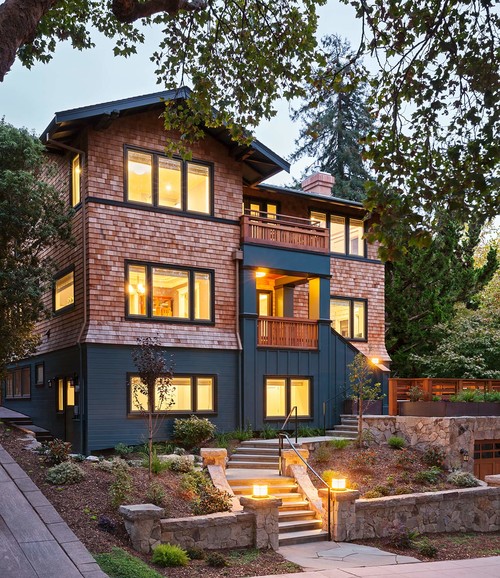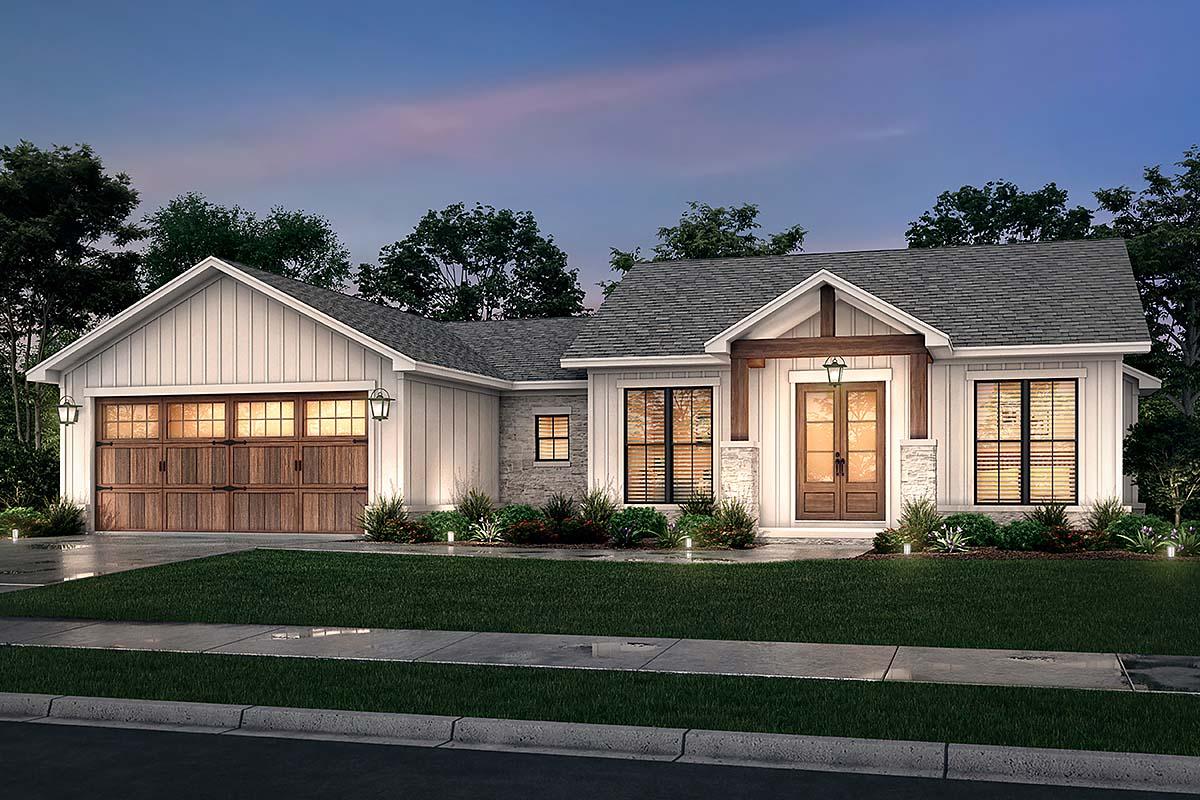Updating a craftsman style house While Preserving Its Charm
Wiki Article
The Role of Arts & & Crafts Architects in Elevating Architectural Solutions in Residential Style
Arts and Crafts architects substantially affect residential layout with their commitment to craftsmanship and sustainability. They focus on handmade information and all-natural materials, which boost both visual appeals and area identity. By including clients in the style process, these architects develop special space that reverberate with individual preferences. This technique raises questions concerning the future trajectory of property architecture and its potential influence on area characteristics. craftsman style house. What lies in advance for this classic design ideology?
The Concepts of Arts and Crafts Architecture
The essence of Arts and Crafts architecture hinges on its dedication to craftsmanship and simplicity. This building movement arised in the late 19th century as an action to industrialization, highlighting the worth of handcrafted details and all-natural materials. The concepts of Arts and Crafts architecture focus on capability and harmony with the setting. Frameworks normally feature low-pitched roof coverings, broad eaves, and exposed rafters, promoting a sense of unity with nature.Artisans played a substantial role in this style, usually incorporating ornamental elements like discolored glass, floor tiles, and woodwork, which show regional craftsmanship. The color palette has a tendency to be earthy and controlled, allowing buildings to blend flawlessly into their environments. On top of that, the design encourages open layout and communal areas, fostering a feeling of togetherness. On the whole, the concepts of Arts and Crafts architecture commemorate the beauty of simpleness and the relevance of human connection to both nature and community.

Sustainable Practices in Residential Layout
While the need for environmentally liable living remains to grow, sustainable practices in domestic style have actually acquired considerable traction among architects and house owners alike. Architects are progressively integrating energy-efficient innovations and sustainable materials right into their designs, aiming to reduce carbon impacts and enhance power conservation. Techniques such as easy solar layout, eco-friendly roofing systems, and rainwater harvesting systems are becoming common elements of contemporary domestic architecture.Moreover, the option of locally sourced materials decreases transportation exhausts and supports local economic situations. Emphasis on natural light and ventilation not only boosts indoor air quality yet additionally lowers reliance on man-made illumination and environment control systems. These lasting methods show a commitment to maintaining the atmosphere while giving home owners with comfortable, efficient space. As recognition of environmental concerns grows, the assimilation of sustainability in property layout is poised to come to be a specifying quality of contemporary architecture, directed by the concepts developed by Arts and Crafts architects.
Customization and Personalization in Home Layout
Customization and customization in home design have actually emerged as crucial fads in reaction to the expanding desire for distinct living settings that reflect specific tastes and way of livings. House owners significantly seek to customize spaces that resonate with their individualities, resulting in an extra purposeful link with their home. craftsman style house. This movement motivates architects to engage customers in the design procedure, promoting collaboration that assures the final result personifies the homeowner's visionAspects such as bespoke layouts, custom materials, and customized finishes enable for a varied series of expressions in domestic style. Arts and Crafts architects play a crucial role in this advancement, stressing craftsmanship and quality. Their emphasis on incorporating creative aspects with functionality guarantees that each home is not just cosmetically pleasing however likewise distinctly suited to the residents' requirements. Subsequently, this focus on modification boosts the total household experience, creating areas that are both individual and enduring.

The Influence of Arts and Crafts Architects on Area Aesthetic Appeals
As areas evolve, the impact of Arts and Crafts architects significantly shapes their aesthetic landscape. read By emphasizing handcrafted details, natural products, and standard construction methods, these architects develop homes that resonate with their surroundings. Their layouts usually include neighborhood flora, textures, and shades, promoting a sense of harmony between built environments and nature.The Arts and Crafts motion advertises area identity via building continuity. By motivating house owners to adopt comparable style concepts, neighborhoods develop a cohesive personality that boosts visual allure. This building harmony not only improves the visual experience yet additionally infuses a feeling of pride among locals.
Furthermore, the concentrate on sustainability and workmanship in Arts and Crafts architecture straightens with contemporary worths, making these layouts appropriate in modern setups. Ultimately, Arts and Crafts architects contribute substantially to the total charm and social stability of neighborhoods, leaving an enduring influence on their visual heritage.

Future Patterns in Arts and Crafts Architecture
With a boosting emphasis on sustainability and customization, future trends in Arts and Crafts architecture are positioned to mix conventional craftsmanship with modern-day innovation - craftsman style house. Architects are most likely to focus on environment-friendly products, utilizing reclaimed timber and all-natural rock to improve the sustainability of household designs. The combination of smart home modern technology will certainly end up being widespread, permitting customized living experiences without jeopardizing visual honestyFurthermore, the rebirth of artisanal strategies will certainly cultivate a renewed gratitude for handcrafted elements, such as bespoke kitchen cabinetry and custom-made tile work. Future styles may likewise mirror an emphasis on community-oriented areas, encouraging interaction and link among residents. Exterior living locations will certainly obtain prestige, seamlessly incorporating nature right into the home environment. As Arts and Crafts architecture evolves, it will certainly remain to honor i was reading this its origins while adapting to contemporary requirements, creating unified spaces that reflect private values and way of lives.
Frequently Asked Questions
What Inspired the Arts and Crafts Movement in Architecture?
The Arts and Crafts activity in architecture was influenced by a response against industrialization, stressing handmade top quality, natural products, and a return to conventional workmanship, intending to create harmonious, practical spaces that commemorated artistry and uniqueness.Exactly how Do Arts and Crafts Architects Collaborate With Customers?
Arts and crafts architects work together with customers through open dialogue, prioritizing individual needs and visual appeals. They emphasize craftsmanship and sustainability, fostering a discover this partnership that incorporates the client's vision with the architect's know-how in style and products.What Materials Are Typically Used in Arts and Crafts Homes?
Common materials in Arts and Crafts homes include natural timber, stone, and brick, emphasizing craftsmanship and natural appearances. These components create a warm, welcoming atmosphere, reflecting the movement's commitment to quality and simplicity in style.Just how Do Arts and Crafts Designs Improve Indoor Living Spaces?
Arts and Crafts designs improve interior living rooms by advertising natural light, open flooring plans, and handcrafted information. These elements promote a warm, welcoming ambience, urging a link between locals and their settings through thoughtful, functional visual appeals.What Are Some Famous Examples of Arts and Crafts Architecture?
Famous examples of Arts and Crafts architecture consist of the Wager Residence, Greene and Greene's masterpiece in California, and the Robie Residence by Frank Lloyd Wright. These frameworks display handcrafted information and consistency with nature, specifying the motion's significance.Report this wiki page